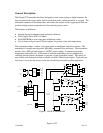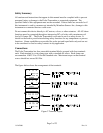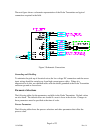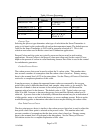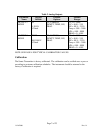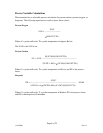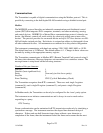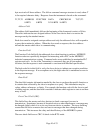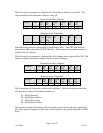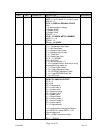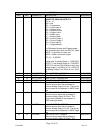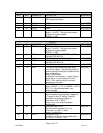
Page 9 of 23
11/14/2006 Rev. 14
Communications
The Transmitter is capable of digital communications using the Modbus protocol. This is
possible by connecting to the half duplex RS-485 terminals using a shielded twisted pair.
Modbus
The MODBUS protocol describes an industrial communications and distributed control
system (DCS) that integrates PLCs computers, terminals, and other monitoring, sensing,
and control devices. MODBUS is a Master/Slave communications protocol, whereby one
device, (the Master), controls all serial activity by selectively polling one or more slave
devices. The protocol provides for one master device and up to 247 slave devices on a RS-
485 half duplex twisted pair line. Each device is assigned an address to distinguish it from
all other connected devices. All instruments are connected in a daisy-chain configuration.
The instrument communicates with baud rate settings 1200, 2400, 4800, 9600, or 19.2K.
The default baud rate is 19.2Kbuad. The default address is 1. Changes to these values can
be made by writing to the appropriate memory register.
The Transmitter communicates in Modbus RTU (Remote Terminal Unit) protocol using 8-
bit binary data characters. Message characters are transmitted in a continuous stream. The
message stream is setup based on the following structure:
Number of bits per character:
Start bits 1
Data bits (least significant first) 8
Parity None only (no bits for no parity)
Stop bits 1
Error Checking CRC (Cyclical Redundancy Check)
The Transmitter recognizes three RTU commands. These are: read single I registers
(command 4), read a single H register (command 3), and preset a single H register
(command 6)
In Modbus mode, the Transmitter can be only be configured for the ‘none’ parity option.
The instrument never initiates communications and is always in receive mode unless
responding to a query.
RTU Framing
Frame synchronization can be maintained in RTU transmission mode only by simulating a
synchronous message. The instrument monitors the elapsed time between receipt of
characters. If three and one-half character times elapse without a new character or
completion of the frame, then the instrument flushes the frame and assumes that the next




